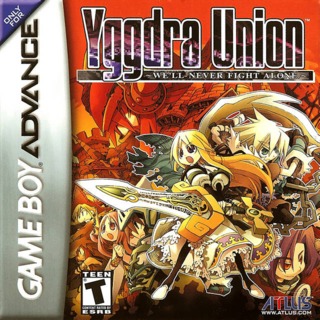Unique game play elements make this unlike any other strategy game
In the loading screen, a limited number of cards can be chosen in a mission. When the battle begins and a card has been chosen, it dictates the number of movement spaces, the attack power of the units and the special ability the Player can use. This game can be rather slow paced as the number of moves is shared between all your characters. So players can either have a quick one man attack or a sluggish mass attack. Many perfectionists may be turned off as it is close to impossible to explore every nook and cranny for hidden items (especially secret extra items) because it is an automatic failure once a player runs out of cards (although they can always retry the mission). Attack power on the card decides how much morale will be lost if the battle is successful not the actual strength of the unit. Instead the actual strength of the unit depends on the terrain, level, stats and item equipped on that unit. Once you are victorious, the attack power of your particular card may increase or decrease depending on how successful your victory was. This helps keep your cards from being obsolete, but sadly this prevents any diversity of game play as players would probably rely on the same cards over and over, with the exception of special abilities. Special abilities is what makes this game fun and diversified as the player as well as the opponent can launch devastating abilities that can turn the tide to their favor. However special abilities have strict requirements, such as requiring a certain type of unit, a certain time of day and/or a certain type of terrain.
The unusual attack system is something that people are going to either hate or like. You can only attack once per turn, and the attacker cannot move after the battle has finished. What makes this game shine is that the attacker can form a union with other units so that they can join them in battle. All it takes to form a union is for a unit to be next to the attacker diagonally or horizontally and vertically (this depends on the union type + or X). So even though you can only attack once, the battle may be over in that one turn because you made a union to make a 2v1 or even a 5v1 battle. The union system helps emphasize teamwork, as units work together taking down the same unit, which is lacking in other strategy games. Once an attack has commenced, you can see your units jump into battle with a first strike and the enemy attempts to counter. After that units can either go for aggressive or defensive maneuvers. The aggressive maneuver allows more damage to be done, but drains the battle bar on the top. The passive maneuver weakens your units, but charges the battle bar, which when full can activate the special ability. Overall the game play gets repetitive at times, as there are some points where the battle scenes seem to last forever and there is no option to skip them. There are some points of the game, where you will meet some indestructible characters as they can’t seem to lose all their morale. This gets incredibly annoying because the game rarely tells you what to do next. Instead the game lets you attempt to duke it out with these immortal characters, then inform you to retreat after a couple of turns have passed. I’m not going to ruin the story, but it is the basic anime theme of good vs. evil. The story gets meaningful at times as it questions the paradox of fighting for peace.
Like in their past games like Riviera, Atlus has been always great providing detailed anime drawings. However, this time around I found it a bit lacking as the battle field looked very fuzzy and pixelated. The designers made it so that the battle field was actually a zoomed portion of a beautiful world map. Sometimes it was incredibly hard to even tell which terrain my units were on and I had to rely on what the game says what terrain it is. Another huge disappointment was that this game barely uses any of the GBA’s (even though it’s pretty weak) processing power, as most of the game is run on animated pictures and pre-drawn scenes like in Riviera. There is more free motion in PONG than in Yggdra Union as units move like chess pieces rather than actually running from a point to a point, like in Fire Emblem. Even in the credits of this game, it is just a picture listing all of the names on one screen instead of the usual name flowing credits. By no means do I think this is a bad game, I just felt like they could have added some more free flowing graphics.
The sound is very well orchestrated and catchy. Each unit has different battle music. A cool thing with the music is that the tempo increases when you’re on the aggressive and decreases when you’re on the passive.
This game juiced out to a whopping 40 hours for me to complete the first time around. After this incredibly long journey, there really isn’t any reason to play this game again as the story is very linear. Probably most people would go for a second time at most, because players can eventually choose from two drastically different magicians and also decide on two different endings. Also some players might want to play this game again to get perfect scores and/or find out what happened if they got caught in stealth missions (most of them change objectives if you get caught) and survive them.

